
[117] Dipsacus fullonum, Teasel
Introduction
Dipsacus fullonum, Wild Teasel, (or Teazel or Teazle) is a common and widespread wildflower, generally treated as a weed. It may be called Fuller’s Teasel. I will just call it Teasel.
There are about fifteen species of Dipsacus, all called some form of Teasel, including Dipsacus sativus, a cultivated form also called Fuller’s Teasel. (Dipsacus sativus may sometimes be considered as a type of Dipsacus fullonum.)
The process of Fulling is discussed below.
Taxonomy
Kingdom – Plants
Division – Vascular Plants
Class – Angiosperms (Flowering Plants)
Order – Dipsacales
Family – Caprifoliaceae
Subfamily – Dipsacoideae
Genus – Dipsacus
Scientific Name – Dipsacus fullonum
As you know, plant taxonomy is very fluid at the moment. I can’t quite understand how Dipsacus and Dipsacoideae are not in the family Dipsacaceae, which no longer seems to exist – it was recently merged with several other families and somehow Caprifoliaceae kept the name.
Name
Teasel is an Old English word for this plant or for one of its dried flower heads. It is cognate with the teasing action in the process of fulling.
The Latin name for this plant was dipsacus from the Ancient Greek dipsakos, which also meant a strong thirst. The leaves joining the stem at the base form a cup-shaped structure that collects water.
DIpsacus fullonum looks wrong but the epithet is not a neuter adjective. It’s the genitive plural of fullo, meaning ‘of the fullers.’ You can read about fulling below.
Description
I am going to write this blog backwards and the bit about fulling will come at the end.
I will start with the dried up ‘teasels,’ the dead flower heads, because they are the most significant aspect of this plant. They stay around for a long time and you may see lots of them. As you can see in the following pictures, each flower head is an egg-shaped mass of very sharp spikes, with a ring of long, curved spiny bracts at the base. Even the stem below is covered with thorns.
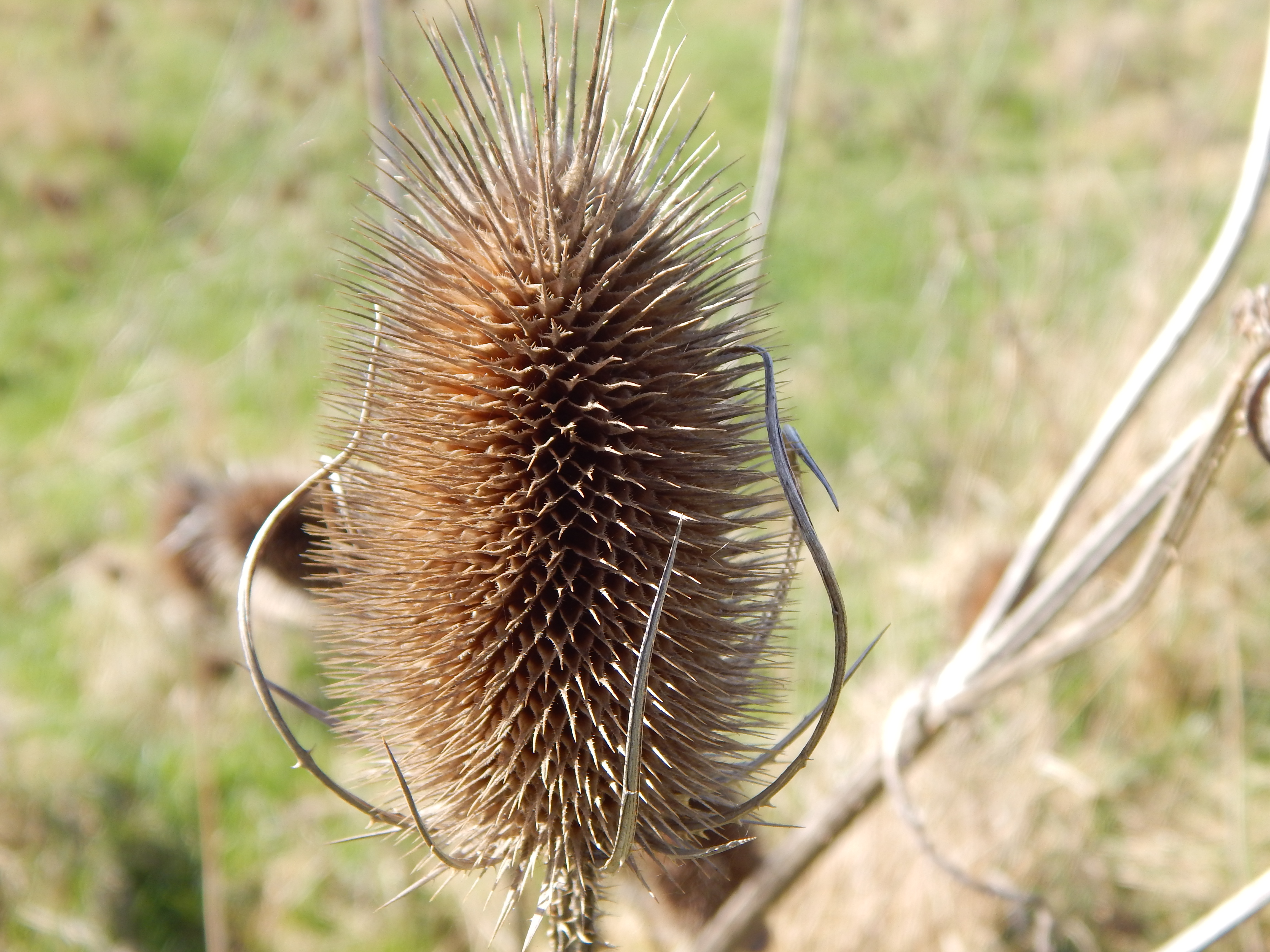

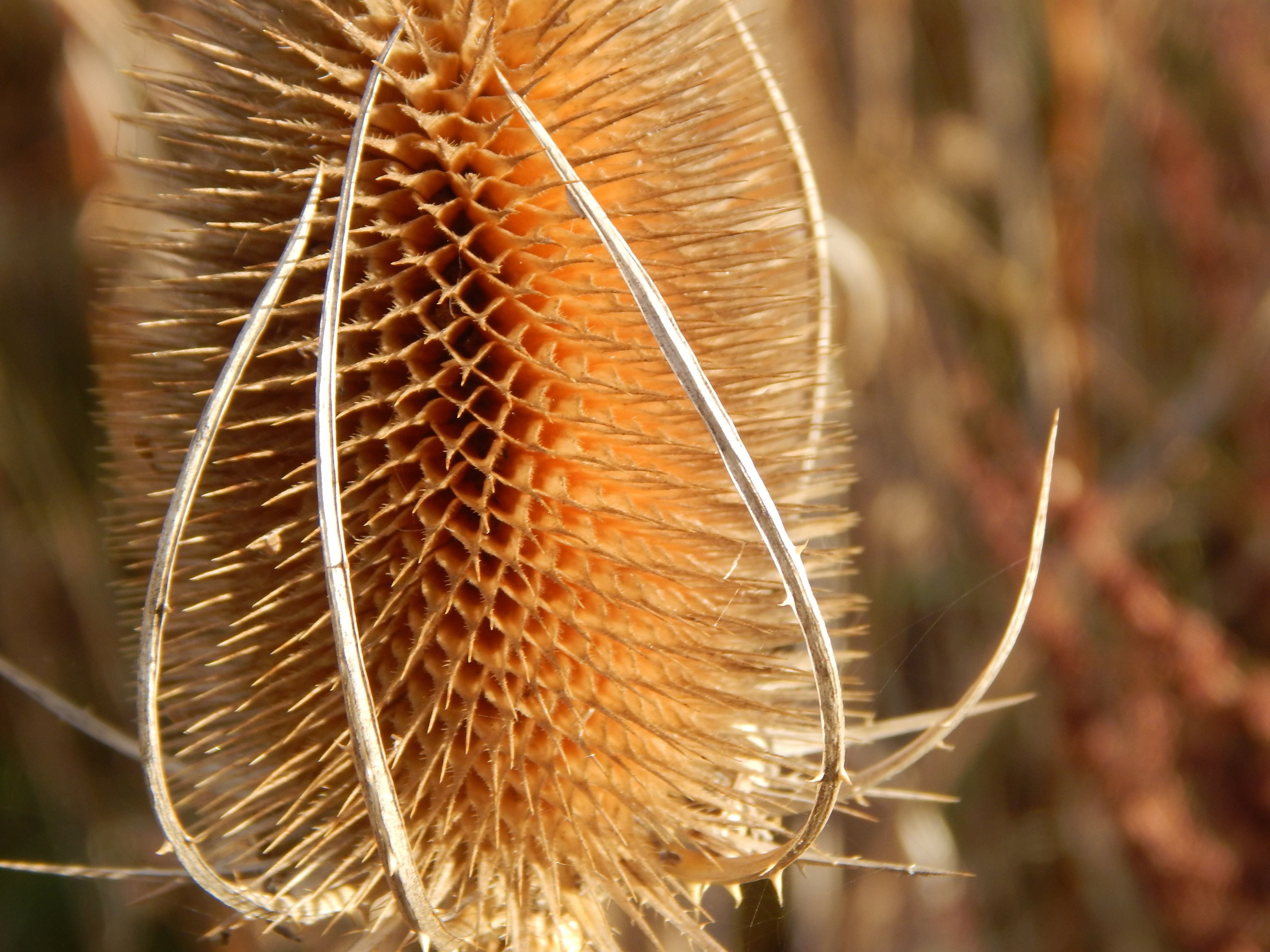



They are full of seeds and they provide a useful source of food for birds like [067] Goldfinch through the winter.
If we go back before they become dried up there is, of course a flowering stage. The tiny light pink or purple flowers nestle between the spikes.
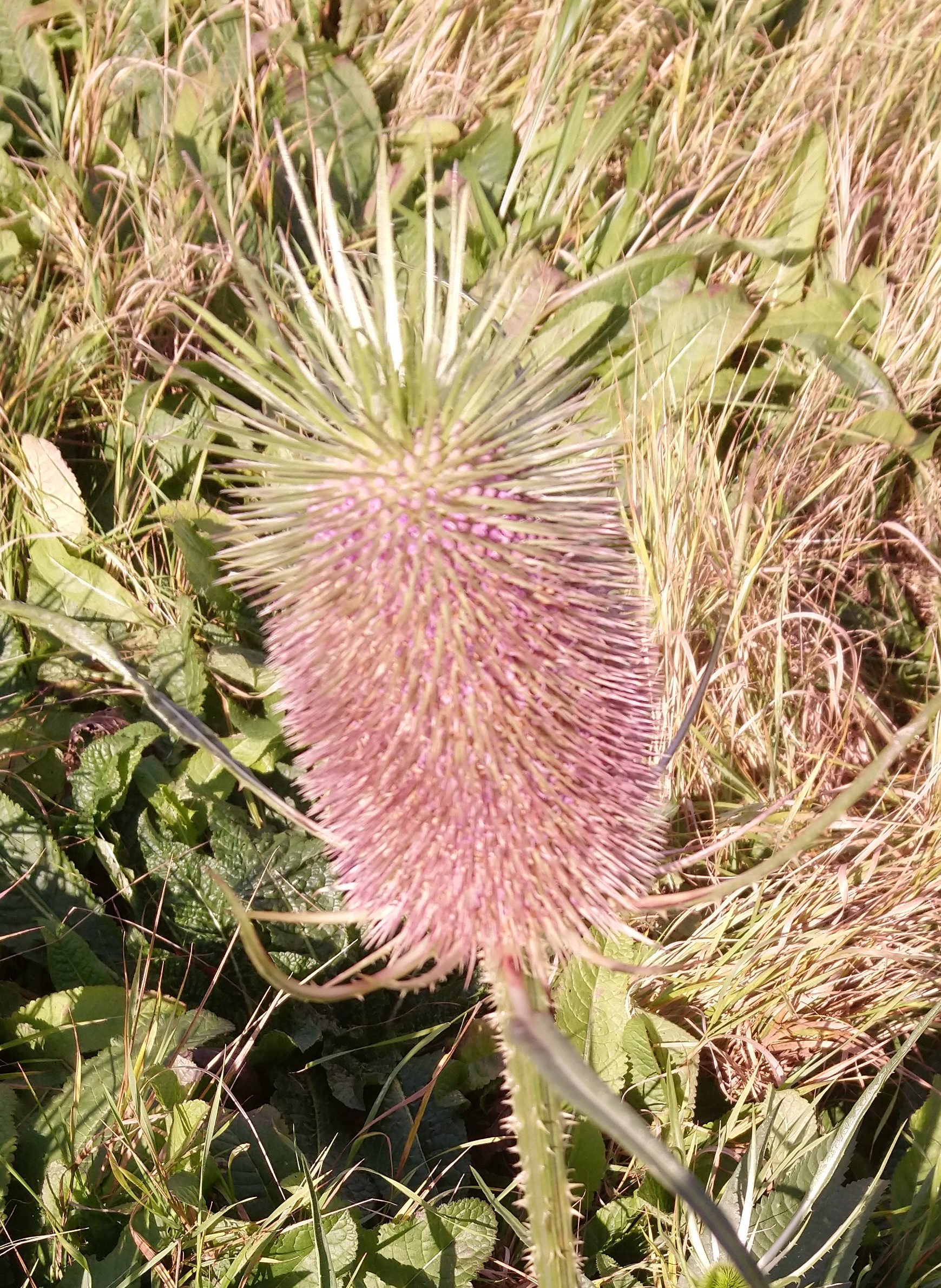


There are flowers like [116] Foxglove and [164] Gladiolus where a linear array of flowers opens from one end but the Teasel is unusual. Florets start opening at the middle and work outwards.

Going back a bit further the budding inflorescence are at first completely green.


If we go back to the developing plant, we can see its long spiky leaves and stems all covered in prickly thorns. I won’t go into the botanical definitions of thorns, spikes and prickles.

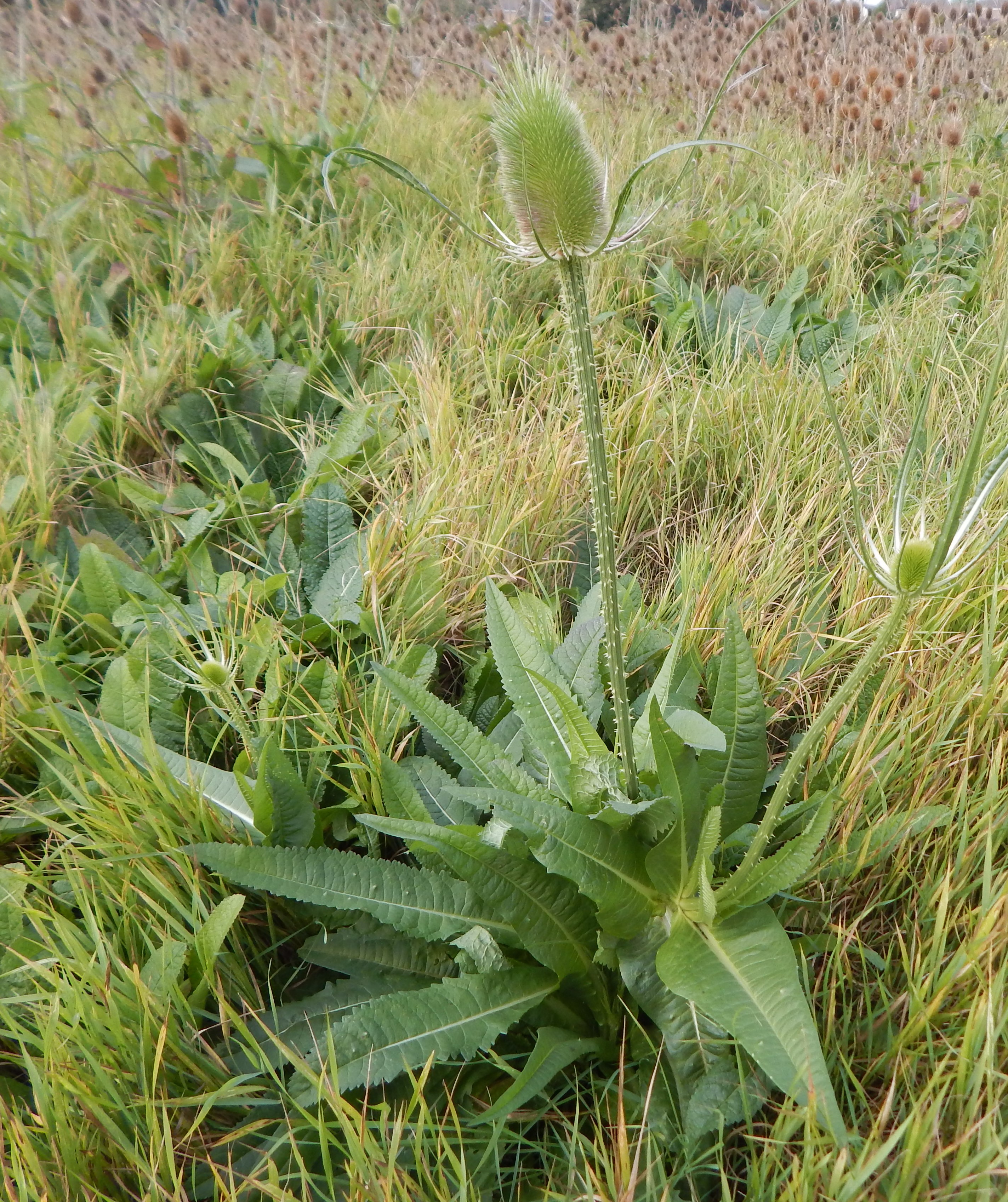
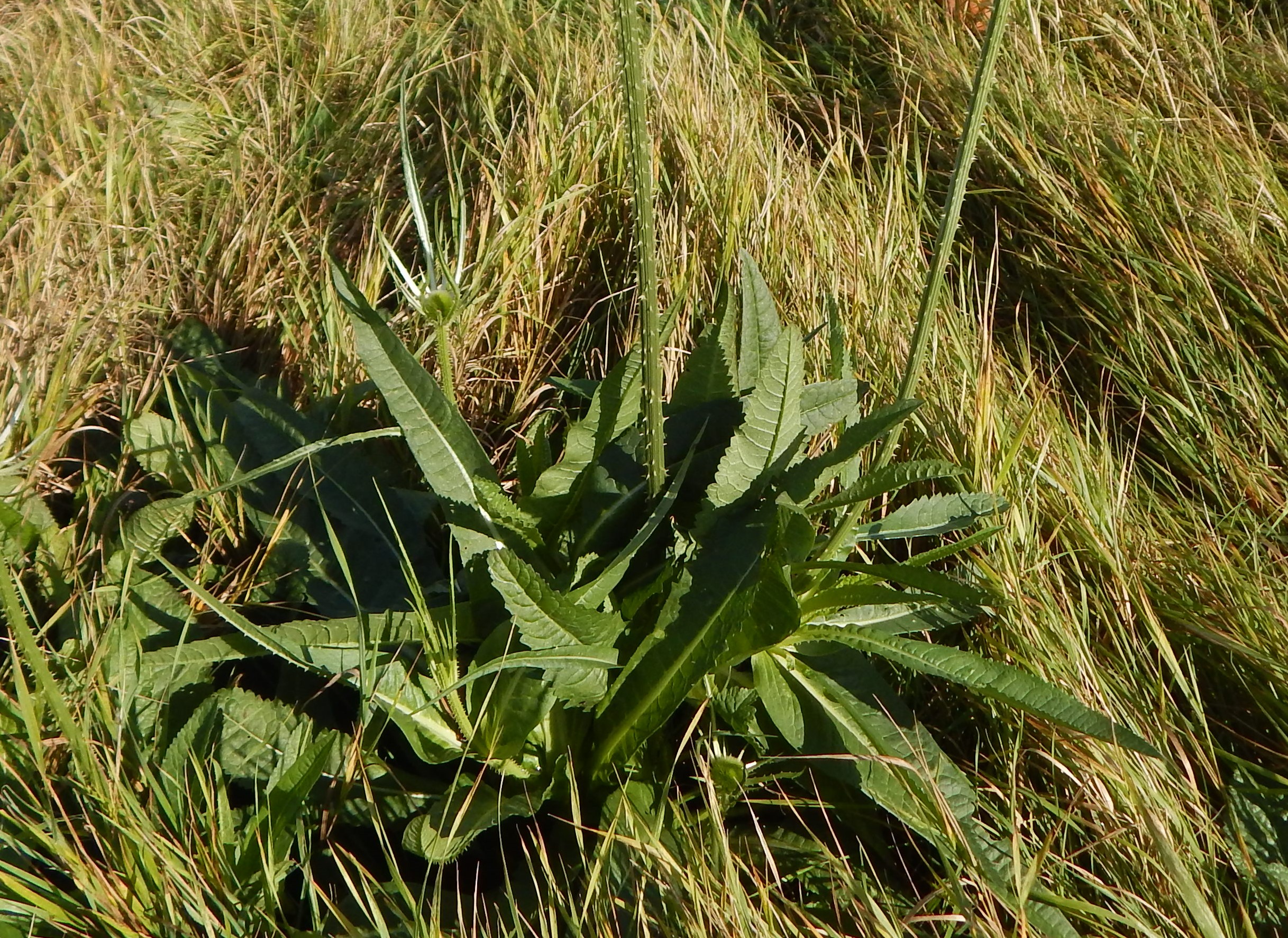
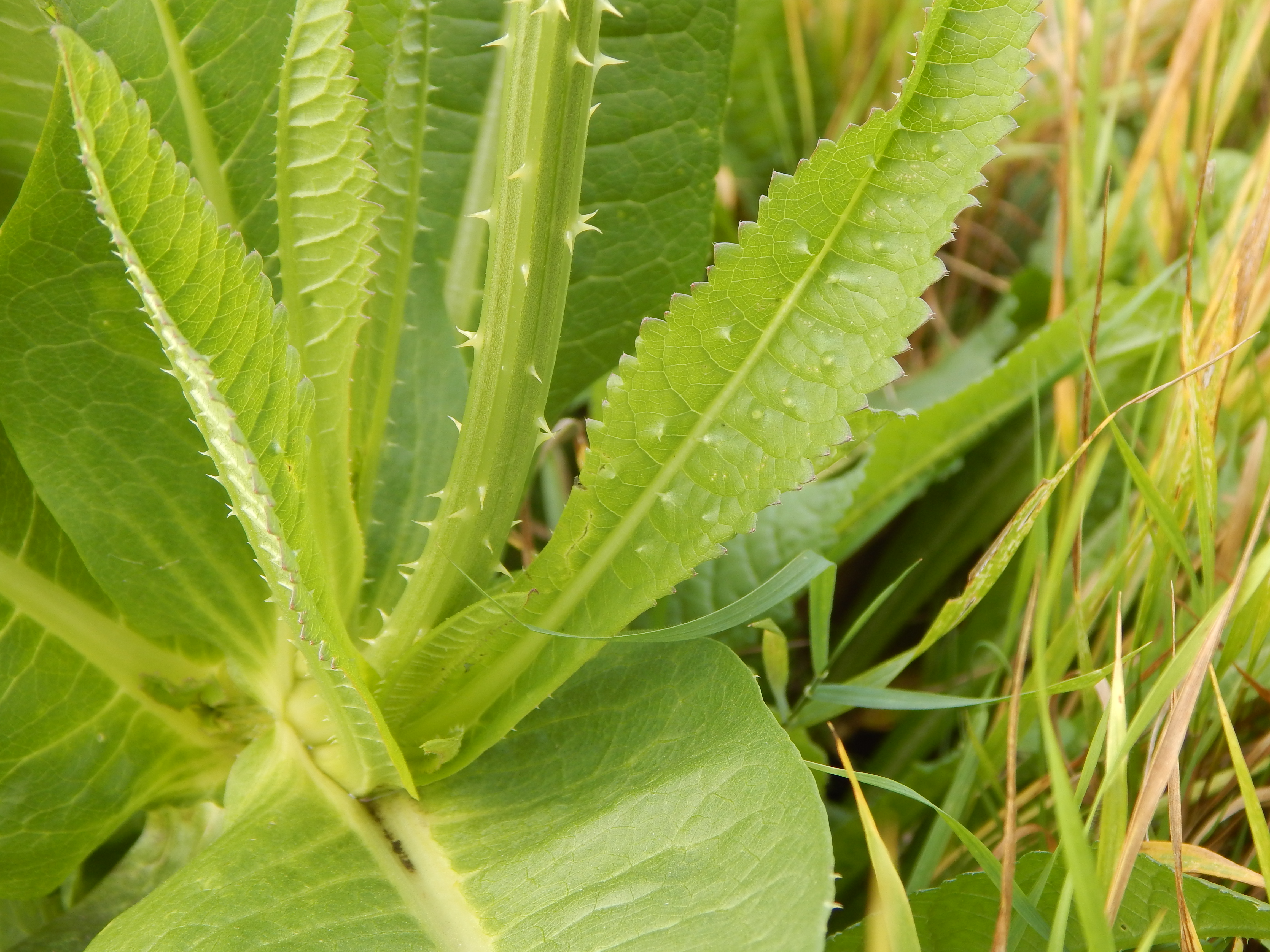
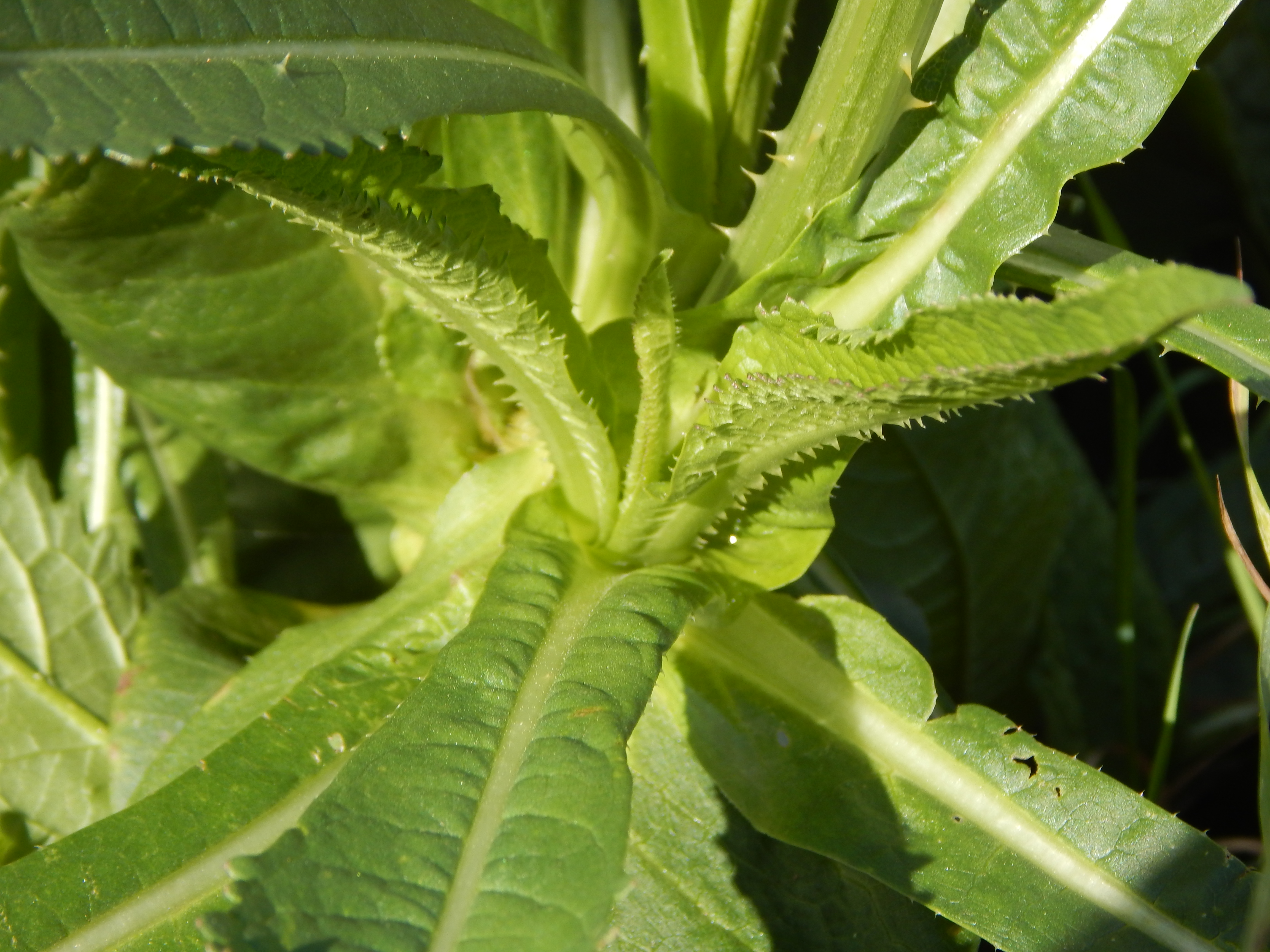

It is supposedly a biennial plant but the ones I see in local parks are cut down after their first year.
Habitat and use
Dipsacus fullonum is native to Eurasia and North Africa. In other countries it can naturalize and is, not surprisingly, treated as invasive. You can see in some pictures above how easily it spreads.
It may be cultivated as a garden plant or in parks, together with other species of Dipsacus, especially in wildflower areas or as a food source for winter birds. The dried seed heads are used by florists in flower arrangements.
Other Notes
This is one of my favourite plants and it is a common and widespread weed.
Fulling
From Roman times until the Industrial Revolution, fulling or walking was an important process in the production of wool. It scoured the wool and thickened it, originally by pounding it with the fuller’s feet. The dried teasel flower heads were attached to frames to scour or ‘tease’ the fabric and raise the nap.
Teasels are still sometimes used in the process but industrially it is now done using metal combs.
Fulling was the origin of the fairly common English surnames Fuller, Tucker and Walker, and of the ending ‘pandy’ in Welsh place names.
